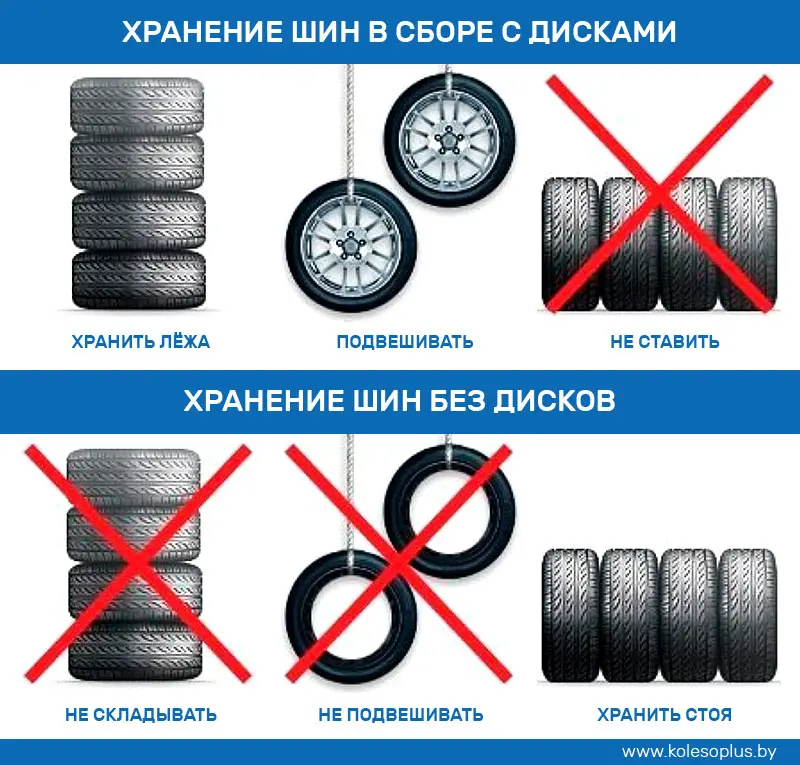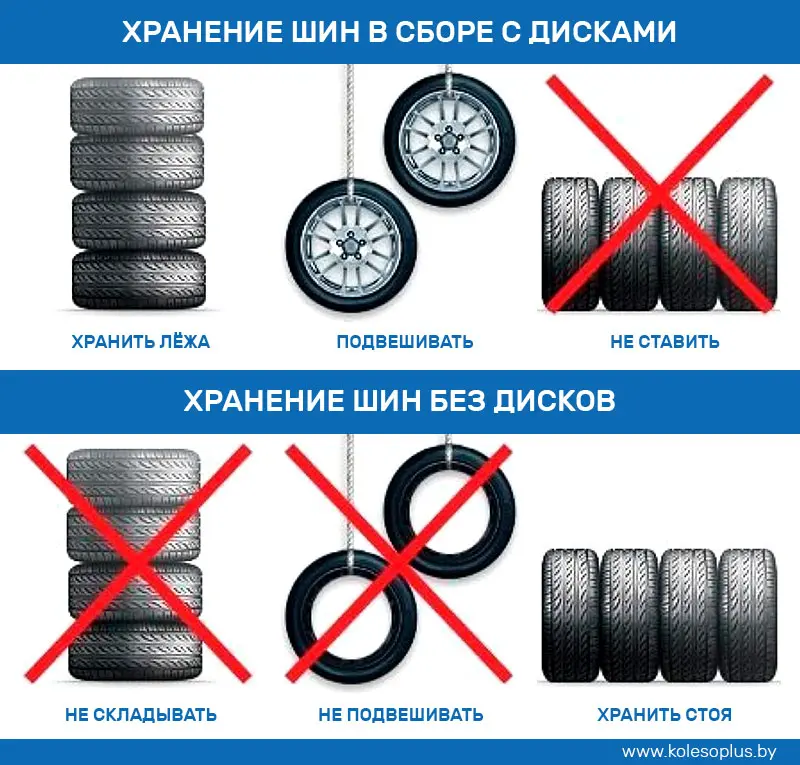
How to store tires on rims?
Proper storage of tires that have already left their season is extremely important. And it is better not to violate this regime of their storage, otherwise at the beginning of the next season you will find damaged and unusable tires. In order not to have to urgently buy a new set of tires, it is better to take care of their storage in advance.
This issue is especially acute for those motorists who prefer to drive on expensive and high-quality tires. Tires of well-known manufacturers really have amazing properties and at the same time serve for several years. However, during periods when such rubber is not used, it must be stored correctly in order to fully preserve all its valuable characteristics.
Car tires are quite large items that take up a lot of space, and many drivers have a lot of problems with where to store them. It is more logical to store them there in the garage, but not everyone is able to provide the desired temperature. If from December to February in this room there is a minus temperature and high humidity, then this place is not suitable and the tires will not lie in good condition for a long time. And it doesn’t matter if they are winter or summer - cold and high humidity will kill any model.
It would also be a bad idea to litter landings and vestibules with them - the conditions there are most likely suitable, but this is a strict violation of fire safety rules and the rights of other residents. It is simply unhygienic to store tires in areas where people live. In no case should you keep rubber on the street or on unglazed balconies.
The best place for wintering is a heated garage with no windows and with ventilation working so that condensation does not form. In order not to clutter up extra space, tires can be placed under the ceiling along the walls.
A good storage environment for rubber during the winter months is brick, concrete slab, or foam block garages. You can also keep them in wooden buildings, but only if the walls are covered with a fire-fighting compound. It is the worst thing to store tires in a metal structure - in winter they are very cold, and in summer they heat up strongly and quickly in the sun. They are hot during the day and cool at night - such sudden temperature changes do not guarantee anything good either for tires or discs.
But a warm garage is now an expensive pleasure. It is possible to identify tires in a dry, warm and ventilated cellar or basement, where almost no sunlight penetrates. Damp basements with mold on the walls are excluded. In apartments, it is recommended to store tires only in separate rooms or closets, where moisture from the kitchen or bathroom does not penetrate. You can take the rubber to a glazed and insulated balcony, but then it will definitely be wrapped in a dense, ventilated material.
If there are no options at all, then you can contact tire shops or auto parts stores that provide such services. For a small fee or even free of charge, they will be stored in optimal conditions on special racks during the season or even all year round.
Most car enthusiasts believe that storing tires on rims is the most acceptable way to save rubber for a long time, since elasticity is not lost and it is less exposed to destructive factors.
Tires on rims can be stored horizontally or suspended. Remember, if you chose the second storage method, then be sure to fasten the disk in the middle and only then hang it up. A good option would be to buy a rack with a hook, for which you can hang products and thus accurately eliminate deformation.
It is better not to put the assembled tires in a vertical position, but to stack them in piles of 2-4 tires, having previously lowered the pressure in the cylinders to 0,5 atmospheres. Once every two months they will have to be shifted so that the lowest one does not deform under the weight of their fellows.
Also, to store tires in piles, you can use ordinary, dense polyethylene bags. But, certain difficulties are associated with storage in bags: if you tighten it tightly, then condensate forms inside, which will ruin the tire for a long time. Therefore, it is recommended not to completely tie the bag or to make a set of small holes on it for air circulation.
First of all, it is recommended to thoroughly rinse and dry them in order to get rid of dried dirt, small particles of various chemicals, and so on. You can do this at specialized car washes, where you will be provided with a variety of cleaning products.
After the tire has dried, it is treated with a kind of preservative compound that will help preserve it, so to speak, in its original form. It is best to use for these purposes, as it is well absorbed and creates a thin protective layer against dust, dirt and water.
The ideal environment for car tires of any season is a dry, dark, regularly ventilated room at a temperature of +15 to +25 degrees. A lower temperature is also allowed, but not lower than 0. The humidity level should not exceed 60%.
For tires, direct sunlight is detrimental, so they either have to be removed away from windows, or wrapped in a thick tarp or a special cover that will provide a constant supply of oxygen. Tires should not be allowed near heaters, batteries or open flames.
Also, near the tires should not be any solvents, paints and other chemicals with strong odors.
Despite all the advertising and loud statements, the rubber composition of even winter models is very sensitive to sudden changes in temperature, high humidity and direct sunlight, etc. Therefore, due to incorrect storage, tires can very quickly become unusable.
As you already understood, proper storage of rubber has many nuances. The main thing is to choose the right place and diagnose whether it meets the standards, and also determine the method. But, subject to all the above recommendations, it turns out that preparing tires for long-term storage is not so difficult as it seems at first glance.
